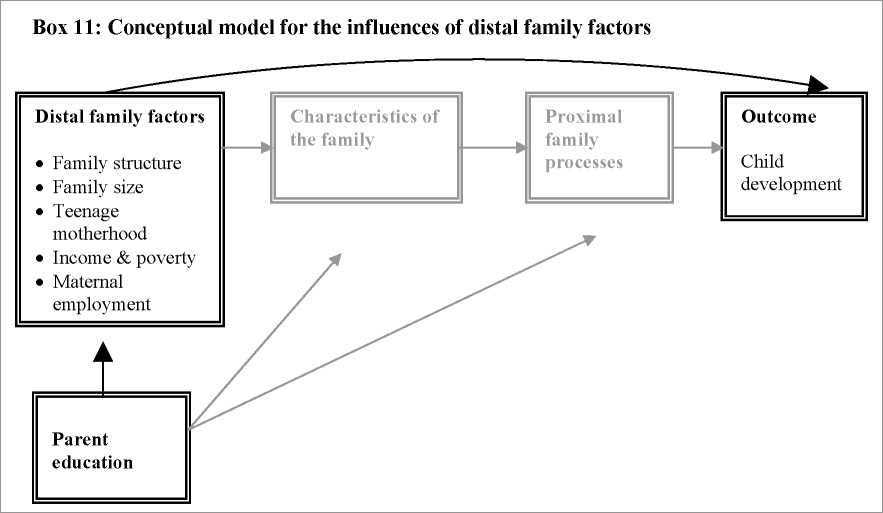Distal family factors
5. Distal family factors

5.1. Introduction
Parental education is not the only factor that affects inter-generational relations.
Other distal factors can also affect child development through proximal processes.
Children’s educational attainments can be affected by factors such as the number of
siblings, the structure of the family or the age of parents at first birth. These factors
are distal in that while they shape the experiences of children’s lives and outcomes
their influence is not immediate in an ecological sense. The impact of distal features
on children’s development is in this sense mediated by the characteristics of the
contexts experienced by the child.
For example, the evidence may suggest that the age of parents can be an important
determinant of development but there is an important theoretical and empirical
question as to why that should be so. Parents’ age may be a specific and quantifiable
variable that can be applied in the analysis of data but the raw correlation between
that variable and the development of children could be due to a range of known and
unknown causal connections. The developmental psychology model that we are
applying uses the structure of distal and proximal features to attempt to clarify these
pathways.
This section describes the most important distal factors that are commonly found to or
thought to have important effects on children’s outcomes:
i. Family structure;
ii. Family size;
62
More intriguing information
1. The name is absent2. Does Presenting Patients’ BMI Increase Documentation of Obesity?
3. The name is absent
4. Credit Market Competition and Capital Regulation
5. Manufacturing Earnings and Cycles: New Evidence
6. The name is absent
7. Pupils’ attitudes towards art teaching in primary school: an evaluation tool
8. Bargaining Power and Equilibrium Consumption
9. Announcement effects of convertible bond loans versus warrant-bond loans: An empirical analysis for the Dutch market
10. The name is absent